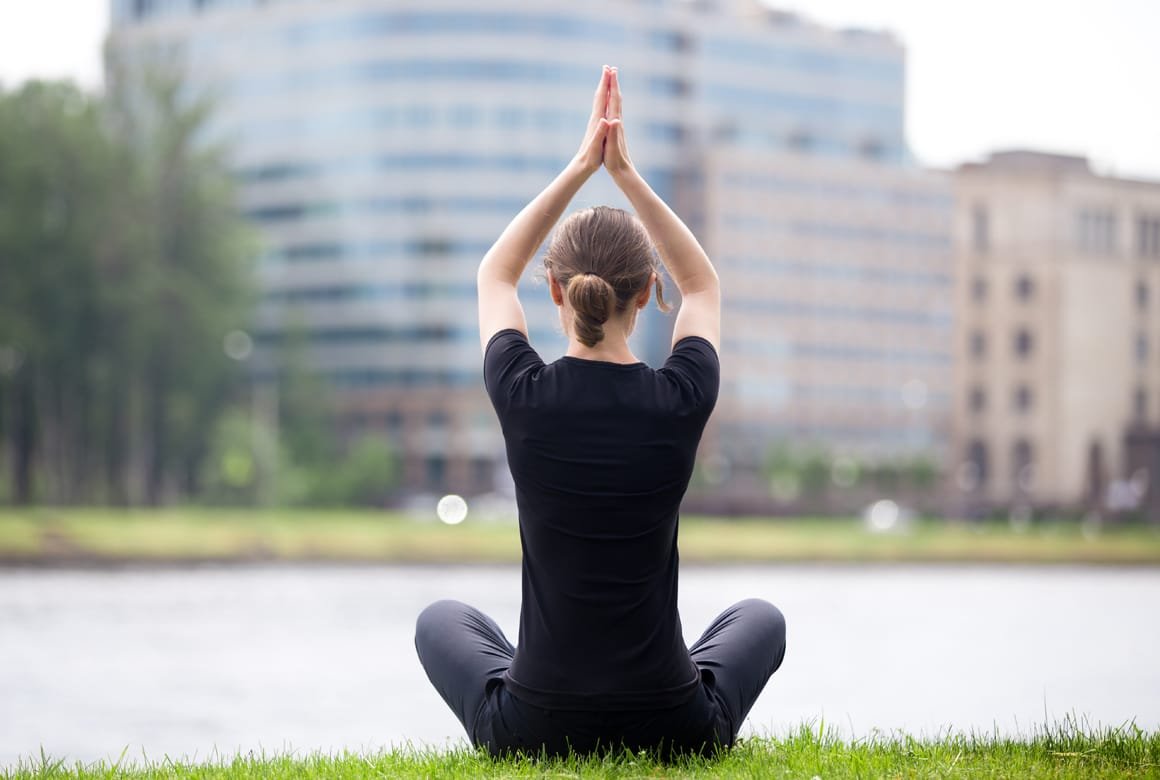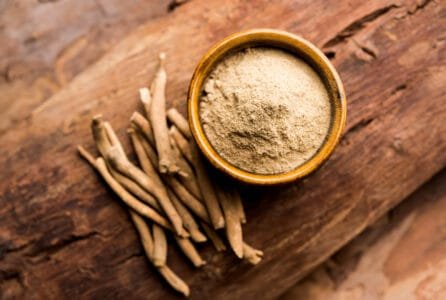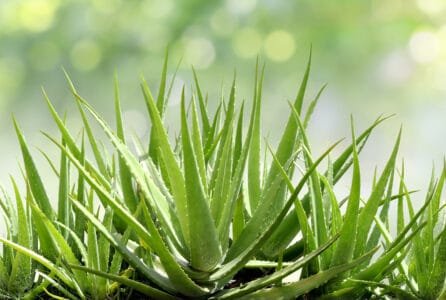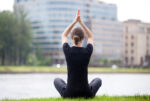21st JUNE: BOONE TO THE HUMANITY
INTERNATIONAL YOGA DAY
Many of us are practicing yoga individually at their homes and have felt the benefits of practicing it.
The word ‘YOGA’ is derived from Sanskrit which means to join or to unite.
Today is the day which was declared an international yoga day with the motto of spreading awareness about the importance and effects of yoga in common mass.
On December 11, 2014, at the initiative of Prime Minister Narendra Modi during his UN General Assembly address on September 27, 2014, the United Nations declared June 21 as the International Day of Yoga (IDY) or World Yoga Day. After this the first International Yoga Day was observed around the world on 21 June, 2015. The ministry of AYUSH had made necessary arrangements in India for around 35,985 people, including India’s honorable Prime-minister Narendra Modi and dignitaries from 84 nations. They performed 21 asana (yoga postures) for 35 mins at Rajpath in New Delhi.
GENERAL MOTTO BEHIND THIS DAY:-
Yoga itself means to be united and to be one with the cosmic whole.
It is not just about practicing yoga postures it is more about your inner harmony. For instance, it is all about your breathing process, peacefulness of mind and flexibility of your body.
Anybody can practice any kind of yoga postures but if you are not feeling comfortable with that posture/asana than it will be mere exercise not yoga.
Any Change in your inner being will be reflected on your face, in the shine of your eyes, in your energy and the change within you will be felt by your near ones.
When very sincerely such a huge mass of people will practice yoga then as an effect of it very positive vibes are generated around the globe and this will help in raising collective consciousness.
Yoga is kind an antidote to our negativity and helps to move towards positivity.
HERE ARE FEW OF THE YOGA ASANA/ YOGA POSTURES ARE VERY FRUITFUL IF YOU CAN MANAGE THEM YOUR DAILY ROUTINE:
- SITTING ASANAS:
- VAJRASANA
- YOGA MUDRA
- MATSYA ASANA
- STANDING ASANAS:
- TADA ASANA
- PADHASTA ASANA
- LYING ASANAS:
- BHUJANGASANA
- SHALABHASANA
The Above mentioned asana are very basic and can be easily practiced by beginners. Please don’t by pass your limitations. It may cause harm and will not be fruitful.
As a well-wisher of yours and being a responsible citizen of this country I am going to celebrate today and hope you all will also be a part in spreading positive vibes.
We love our country and moreover.
We love our planet earth.
- VAJRASANA (THUNDERBOLT POSE)

Stand on the knees with the feet stretched backward and big toes crossed. The knees should be together, heels apart. Lower the buttocks onto the insides of the feet, the heels at the sides of the hips. Place the hands on the knees, palms downward.
DURATION:
Practice vajransana as much as possible, especially straight after meals for at least 5 minutes to enhance the digestive function.
CONCENTRATION:
On the normal breathing process, this will bring tranquility to the mind if practiced with the eyes closed.
NOTE:
Vajrasana is the prayer pose of the Muslim and the meditation pose of the Japanese Buddhists.
BENEFITS:
Vajrasana alters the flow of blood and nervous impulses in the pelvic and visceral regions.
- YOGA MUDRA (THE PSYCHIC UNION POSE)
 Sit in padmasana and close the eyes. Relax the body for some time, breathing normally. Hold one wrist behind the back with the other hand. Slowly bend the trunk forward until the forehead touches or nearly touches the ground. In the final position try to relax the whole body as much as possible. Slowly return to the starting position.
Sit in padmasana and close the eyes. Relax the body for some time, breathing normally. Hold one wrist behind the back with the other hand. Slowly bend the trunk forward until the forehead touches or nearly touches the ground. In the final position try to relax the whole body as much as possible. Slowly return to the starting position.
BREATH:
Inhale slowly and deeply in the starting position.
Exhale while bending forward.
Breathe deeply and slowly in the final position.
Inhale while returning to the starting pose.
DURATION:
Try to remain in the final position for a few minutes. If you are unable to stay in the final pose for more than a short time, repeat the asana a few times.
CONCENTRATION:
Spiritual: on manipura chakra.
Physical: on the back, abdomen or breathing process.
PRECAUTIONS:
Do not strain back, ankles, knees or thighs by forcing the muscles to stretch more than their flexibility will permit.
BENEFITS:
This is an excellent asana for massaging the abdominal organs and removing many aliments connected with this part of the body, including constipation and indigestion.
This asana is powerful for awakening the manipura chakra, which is located in the spine behind the navel. This center is one of the prime seats of energy in each individual.
- MATSYASANA (THE FISH POSE)

Sit in padmasana. Ben backward, supporting the body with the arms and elbows, until the crown of the head touches the ground. Hold the big toes and rest the elbows on the floor. Arch back as much as possible. Remain in the final pose up to 5 minutes. Do not strain.
BREATH:
Breathe deeply and slowly in the final pose.
People with infected tonsils or a sore throat can do sheetkari pranayama in the final pose.
CONCENTRATION:
Spiritual: on manipura or anahata chakra.
Physical: on the abdomen, chest or breath.
BENEFITS:
This asana stretches the intestines and abdominal organs, and is very useful for all abdominal illnesses.
- TADASANA (THE HEAVENLY STRETCH POSE)

Stand erect with the feet 4 to 6 inches apart. Raise the arms overhead with the palms facing upward, fingers interlocked and look up at the hands. Lift the heels and feel as though you are being drawn upwards. Completely stretch the body. Slowly return the heel to the ground.
BREATH:
Hold the breath while on tiptoe.
BENEFITS:
Tadasana develops the rectus abdominal muscles and stretch the intestines.
It promotes proper spinal bone growth and clears up congestion of the spinal nerves at the points at which they emerge from the spinal column.
Walking 100 steps in tadasana after drinking 6 cups of water clears up non-chronic intestinal blockage.
Beneficial during the first six months of pregnancy.
- PADA HASTANA (THE FORWARD BENDING POSE)

Stand with the trunk the erect and the hand beside the body. Slowly bend the head forward, then the upper trunk should bend forward as though there are no muscles in the back. Place the fingers underneath the toes or touch the palms to the ground. It this is not possible then to the ground or dynamic form bring the fingertips as near to the ground as possible. Try to bring the forehead to the knees.
Maintain this pose up to 1 minute then slowly return to the starting position.
BREATH:
Exhale as you bend forward.
Breathe slowly and deeply in the final pose.
Inhale as you return to the starting point.
CONCENTRATION:
On relaxing the back muscles or on the breath.
BENEFITS:
Removes excess fat, eliminates constipation and indigestion. Max the spinal column and back muscles lose and supple. It directs a good flow of blood to the brain and facial organs.
- BHUJANGASANA (THE COBRA POSE)

Lie down on the stomach with the legs straight and the feet extended. Place the palms flat on the floor under the shoulders. Rest the forehead on the ground and relax the body. Slowly raise the head and shoulders without using the arms, only utilizing the back muscles. Now bring the arms, into action and slowly bend the back as much as possible without strain until the arms are straight. Keep the navel as near to the ground as possible. Hold as long as comfortable.
Practice up to 5 times.
BREATH:
Inhale while raising the body from the ground.
Breathe normally in the final pose. If the final pose is held for a short time, retain the breath inside.
LIMITATIONS:
People with peptic ulcers, hernia, intestinal tuberculosis or hyperthyroidism should not do this asana.
BENEFITS:
Helps remove female sexual disorders such as leucorrhea, dysmenorrhea and amenorrhea. It tones the ovaries and uterus, stimulates the appetite and eliminates constipation. It is beneficial for all abdominal organs, especially the liver and kidneys.
It relocates slipped discs, removes backache and keeps the spine supple and healthy.
- SHALABHASANA (The Locus Pose)

Lie on the stomach with the hands under thigh, palms facing downwards. Stretch the legs and tense the arms. Raise the legs and abdomen as high as possible without bending the legs. Practice up to 5 times.
Breath:
Inhale deeply in the prone position. Retain the breath inside while raising the legs and abdomen. Exhale while returning to the starting position.
Concentration:
Spiritual- On vishuddhi chakra
Physical- On the abdomen, lower back or heart.
Limitations:
Not to be practiced by sufferers of peptic ulcer, hernia, intestinal tuberculosis or weak heart.
Benefits:
This asana tones and adjust the liver and other abdominal organs, especially the intestines, pancreases, and kidneys.
Strengthens the lower spine & heart, and tones the sciatic nerves.
| ABOUT PARTH THAKER
HEALTH INFLUENCER. EXPLORING FOOD AND WRITING OVER IT IS MY PASSION. CERTIFIED NUTRITION CONSULTANT AND SPORTS NUTRITION CONSULTANT. FOR MORE INFORMATION AND FOR CUSTOMIZED DIET PLANS CONTACT US. EMAIL- parththaker7@gmail.com Read more articles at: |
| ABOUT POONAM THAKER
FOOD Enthusiast. Love and passion for making and exploring food. For me food is Medicine and I am here to share my joy and love. Life is multidimensional Approach. |















